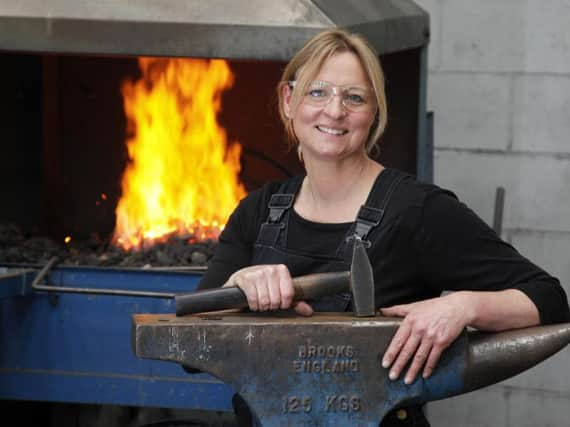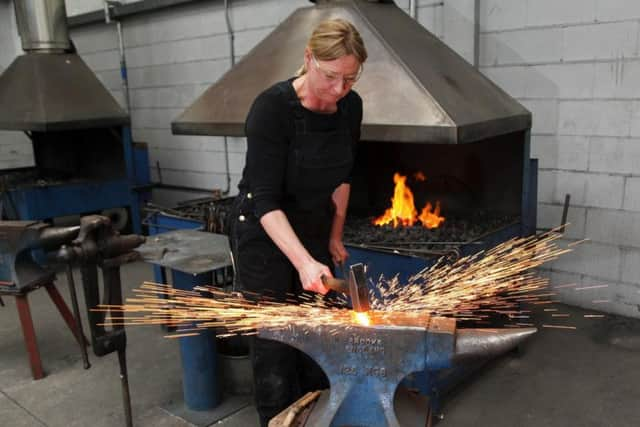A day in the life of...a blacksmithing lecturer: "Metal can be mesmerising"


Scotland's Rural College blacksmithing lecturer Juliet Grant, 46, talks mesmeric metal and shedding the typical image of a blacksmith.
“Every smith has their own style, their own imprint to put into any design, I think you can tell which pieces are distinctive just by looking at them, you get a real sense of what the artist wants to portray.
Advertisement
Hide AdAdvertisement
Hide Ad“Like a lot of artists, my real passion for creativity started at school with a really enthusiastic art teacher who encouraged me to pursue that part of myself.


“I grew up in Monifieth, Angus, but it was when I moved to Bath that I was really able to embrace my love of art.
“My art teacher at school was a real motivator for me, helping to steer me in a lot of ways to experiment with everything from photography to still work, I didn’t even know metalwork at that stage was an option.
"We work with metal that is hotter than lava"
“Blacksmithing was something that I only really became aware of when I went to university in Wolverhampton. I did a degree in three-dimensional design where we were working with plastic, wood and metal on a daily basis.
Advertisement
Hide AdAdvertisement
Hide Ad“Once you get into that space where you are working with a material that closely, you just become obsessed with what you can make. I have seen people work with metal and make some of the most intricate, beautiful pieces, each one with its own unique style.
“When I was working in the industry for P Johnson out in Ratho, we were making everything from bespoke gates, railings and balconies, to more individual pieces, like sculpture works and fire baskets, but the actual manufacturing of those kind of unique creations takes a lot longer and is far more complex than a lot of people realise.
“Every little bit has to be individually crafted, each one moulded and built to very specific requirements. Often when we were creating the more bespoke items, we would be working closely with a designer who had already sketched out the client’s ideas. Obviously then it was up to us to try and make that vision come to life.
“I have been teaching blacksmithing at Scotland’s Rural College for ten years now and passing on the knowledge I have picked up over the years has been fantastic, especially when you are working with people who are there because they are passionate about the craft.
Advertisement
Hide AdAdvertisement
Hide Ad“As soon as everyone comes in, it is safety first. The forges we are working with get hot, really hot. Typically they burn at around 2000C, which is hotter than some lava flows, you never want anyone to be in a situation where they around that kind of temperature and don’t know what to do.
"A lot of women do great work with metal"
“There is almost this kind of typical image of a blacksmith as being this huge man with giant hands that can bend metal by himself, but there are a lot of women doing some great work with metal, particularly those working as farriers.
“There has been a big growth in that part of the industry recently, a lot of the people we get coming to classes at the college are there to learn that aspect of the trade.
“It is still a male dominated industry, there is no doubt about that. On the average course, we will have around six guys and maybe two or three girls, but there are more women involved in metalwork than most people realise and they producing some absolutely remarkable pieces.
Advertisement
Hide AdAdvertisement
Hide Ad“We run two 16 week courses over the year, with around eight people on each course. All of them are there for different reasons, some are there because they want to become farriers or blacksmiths, some are retired and want to try it out, but others are there because they love the art form and that is really encouraging to see that there are people out there who still love the feeling of working with metal.”